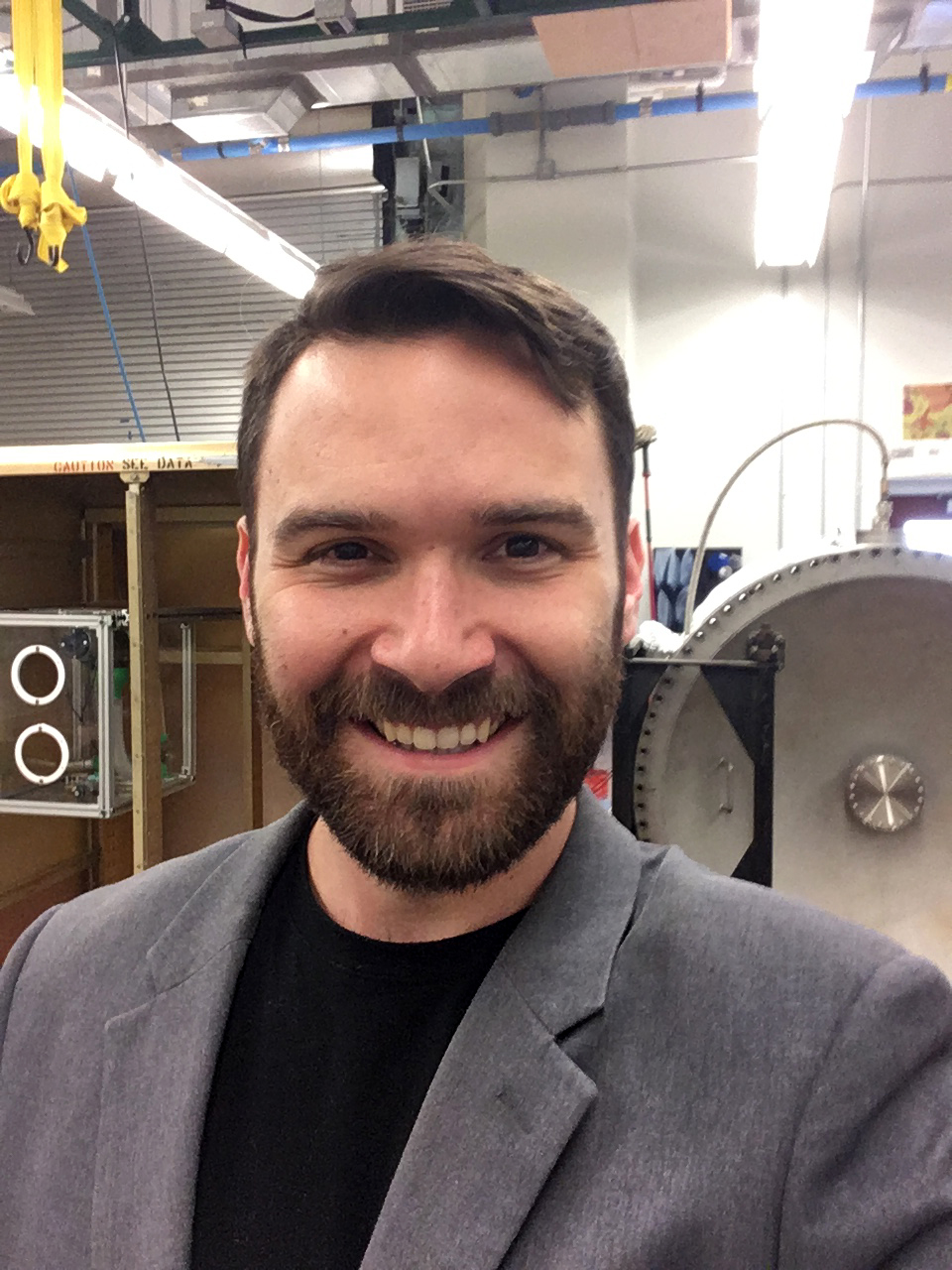Hunter Williams
Colorado School of Mines
Objectives
There are three key objectives to this proposal: modeling, design, and evaluation. Each objective has research goals in both fundamental science and practical applications for space missions.
The first objective is to physically model the processes and material properties needed for the design of a system using concentrated sunlight to 3D print regolith in a simulated extraplanetary environment. Industrial 3D printing is often accomplished on Earth by sintering powder particles together using a laser. Many classes of materials have been successfully sintered including plastics, metals, and ceramics. Collected sunlight uses the same fundamental process of applying high energy to a small area of particles, sintering them together, scanning across a surface to make a sintered particle layer, and repeating the process by layers until a part is complete. Physical models of these processes have been produced in academia and industry for laser systems with regulated grain sizes and surface conditions, but there is no model for such a system using sunlight or unsieved regolith. The modeling will entail the use of optical design software such as Zemax for ray tracing and thermo-mechanical modeling in software such as ABAQUS. Models will be compared with practical test results to evaluate their utility for fundamental material science and additive manufacturing system design.
The second objective is to design and develop such a system. The system will consist of a light source, a collecting lens, a positioning system, and a regolith spreader. Parts will be produced on this system first in open air, then under partial or full vacuum and the electrostatic conditions of planetary bodies without radiation belts.
The third objective is to use modern, non-destructive evaluation techniques on parts produced by the system to optimize the printing process and evaluate the effectiveness of the technology when compared with other, better understood techniques proposed for use in space resource utilization missions. These techniques may include infrared imaging during the printing process, x-ray analysis of grain structure, ultrasonic measurement of voids, or a number of other available technologies at the Colorado School of Mines.
Research Methods
The proposal objectives will be met with an iterative process: a computer model will be developed, a prototype will produce parts, the parts will be evaluated, and the model and prototype will be adjusted to align test results with desired outcomes. Though the modeling is allocated time at the beginning of the process, continual updating of the computer model will be essential to both scientific understanding and quality control. There is expertise at the Colorado School of Mines in collected solar radiation, optical mining, simulated extraplanetary environments, additive manufacturing, and regolith geophysics. All work will be performed by the student, but these resources will be utilized to maintain focus on the important unanswered questions discussed in this proposal.
Significance
Though concentrated solar additive manufacturing has often been suggested for space manufacturing and exploration, very little fundamental science or engineering has been done on it to date. Physical modeling of granular behavior, thermal processes, and bulk material properties of regolith sintered in a realistic environment will be valuable first steps towards any manufacturing on Mars or the Moon. Though concentrated solar printing systems by nature will have few moving parts, the optical design and process parameter optimization necessary to produce a working system has yet to be done. The results of this grant could be immediately useful in planning resource utilization missions for the next decade. Solar-material interaction modeling will also be useful for optical mining of asteroids, thermal mining of shadowed regions on the Moon, and manufacturing techniques using regolith as feed stock.



























